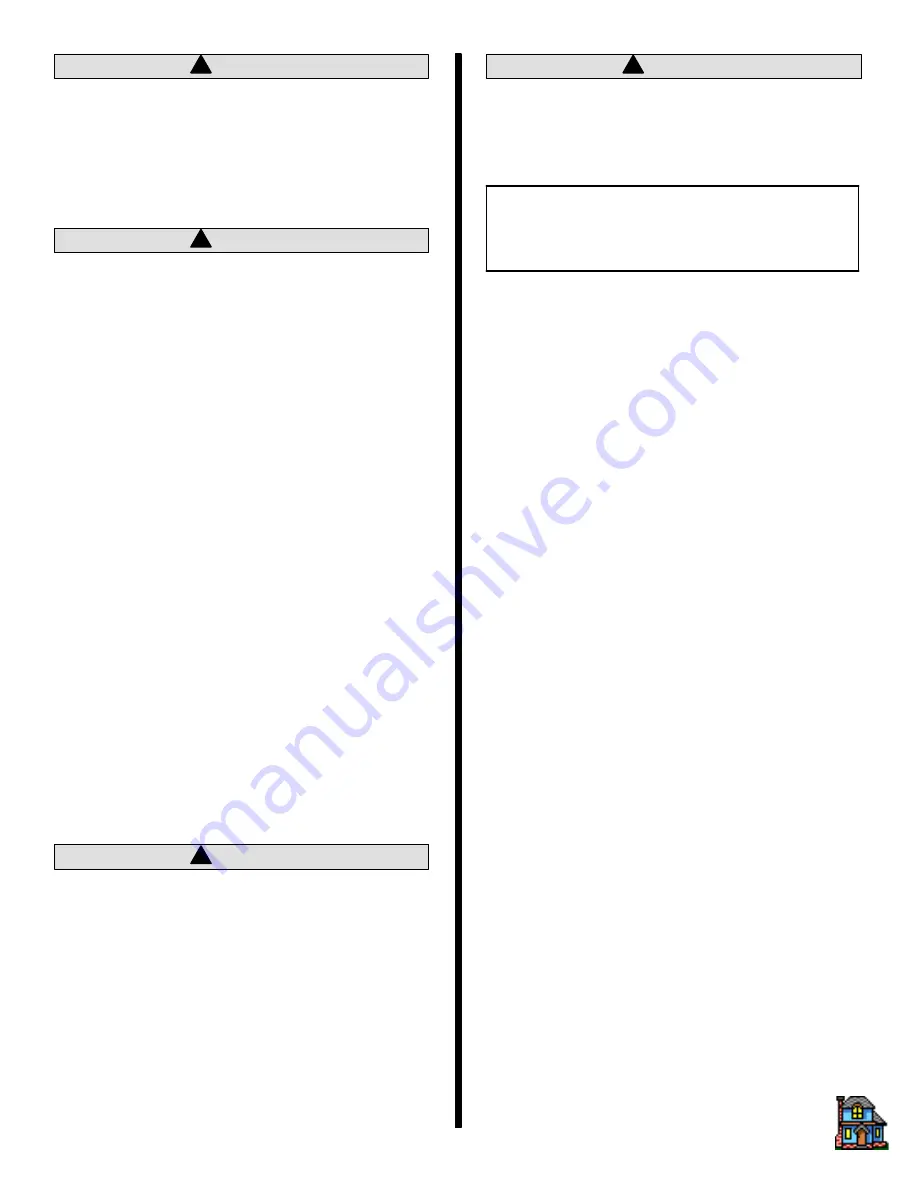
MAINTENANCE - 1B - 15
90-816462 2-695
!
CAUTION
Seawater section of cooling system MUST BE
COMPLETELY drained for winter storage, or im-
mediately after cold weather use, if the possibility
of freezing temperatures exists. Failure to com-
ply may result in trapped water causing freeze
and/or corrosion damage to engine.
!
CAUTION
If boat is in the water, seacock (water inlet valve),
if so equipped, must be closed until engine is to
be re-started, to prevent water from flowing back
into cooling system and/or boat. If boat is not
fitted with a seacock, water inlet hose must be
disconnected and plugged to prevent water from
flowing back into cooling system and/or boat. As
a precautionary measure, attach a tag to the igni-
tion switch or steering wheel of the boat with the
warning that the seacock must be opened or the
water inlet hose reconnected prior to starting en-
gine.
IMPORTANT: Observe the following information
to ensure complete draining of cooling system:
•
Engine must be as level as possible.
•
A wire should be repeatedly inserted into all
drain holes to ensure there are no obstruc-
tions in passages. Remove petcock, if neces-
sary, to insert wire completely into drain hole.
IMPORTANT: To prevent threads in manifolds, el-
bows and cylinder blocks from rusting out during
storage, reinstall plugs using Quicksilver Perfect
Seal on threads. Never leave drain plugs out dur-
ing storage.
NOTE: If possible, place a container under drains and
hoses to prevent water from draining into boat.
!
CAUTION
If engine is equipped with Closed Cooling Sys-
tem, Closed Cooling section must be kept filled
with a solution of ethylene glycol antifreeze and
water (mix antifreeze to manufacturer’s recom-
mended proportions to protect engine to lowest
temperature to which it will be exposed). DO NOT
USE PROPYLENE GLYCOL antifreeze in closed
cooling section. Seawater section, however,
must be drained completely.
!
CAUTION
A discharged battery can be damaged by freez-
ing.
Layup
NOTICE
Refer to “Cold Weather or Extended Storage,”
“Precautions,” in this section, BEFORE
proceeding.
1. Fill fuel tank(s) with fresh gasoline that does not
contain alcohol and a sufficient amount of Quick-
silver Gasoline Stabilizer for Marine Engines.
IMPORTANT: If boat is to be placed in storage
(with fuel containing alcohol in fuel tanks), carbu-
retors must be run dry at idle RPM. Fuel tanks
should be drained completely and Quicksilver
Gasoline Stabilizer and Conditioner added to any
fuel remaining in the tank. Also, refer to “Fuel
Specifications,” see Table of Contents.
2. Replace all fuel filters
3. Start engine and check for fuel leaks.
4. Run engine sufficiently to heat it to normal operat-
ing temperature; shut off engine and change oil
and filter.
5. If boat has been operated in salty, polluted or min-
eral-laden waters, flush cooling system.
6. Remove flame arrestor assembly and restart en-
gine. While operating engine at fast idle
(1000-1500 RPM), fog internal surfaces of induc-
tion system and combustion chambers by squirt-
ing approximately 8 ounces (227 grams) of
Quicksilver Storage Seal or SAE 20W engine oil
into carburetor bores. Stall engine by squirting
last 2 ounces (57 grams) of Storage Seal or oil
rapidly into carburetor. Turn ignition to OFF.
7. Close fuel shutoff valve, if so equipped.
8. Clean flame arrestor and crankcase ventilation
hoses and reinstall.
9. Lubricate all items outlined in “Lubrication.”
10. Drain seawater section of cooling system, out-
lined in “Draining Instructions,” following.
11. Closed Cooling System Models: Test coolant to
ensure that it will withstand lowest temperature
expected during storage.
12. Service batteries.
Index





































